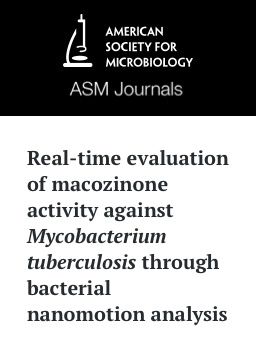
Real-time evaluation of macozinone activity against Mycobacterium tuberculosis through bacterial nanomotion analysis
Abstract
Novel drugs and improved diagnostics for Mycobacterium tuberculosis (MTB) are urgently needed and go hand in hand. We evaluated the in vitro activity of two benzothiazinone drug candidates (MCZ, PBTZ169; BTZ043) and their main metabolites against MTB using advanced nanomotion technology. The results demonstrated significant reductions in MTB viability within 7 h, indicating the potential for rapid, precise antibiotic susceptibility testing based on a phenotypic read-out in real time. PBTZ169 and H2-PBTZ169 achieved 100% separation between the susceptible H37Rv and a resistant dprE1 mutant strain NTB1. These findings support nanomotion technology’s potential for faster antibiotic susceptibility testing of novel MTB drug candidates targeting the DprE1 enzyme that could reduce empirical treatment duration and antibiotic resistance selection pressure due to inaccurate treatments.
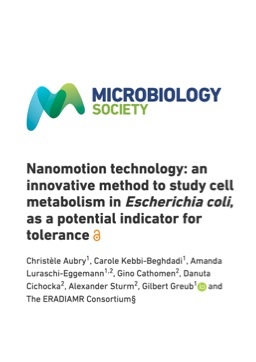
Nanomotion technology: an innovative method to study cell metabolism in Escherichia coli, as a potential indicator for tolerance
Abstract
Introduction
Antibiotic tolerance corresponds to the bacterial ability to survive a transient exposure to antibiotics and is often associated with treatment failure. Current methods of identifying tolerance based on bacterial growth are time-consuming. This study explores the use of a growth-independent method utilizing nanomotion technology to detect antibiotic-tolerant bacteria.
Hypothesis
The nanomotion signal obtained from a nanomechanical sensor measures real-time metabolic activity and cellular processes and could provide valuable information about the tolerance of bacteria to antibiotics that cannot be detected by standard antibiotic susceptibility tests.
Aim
The aim of this study is to investigate the potential of nanomotion technology to record antibiotic-tolerant bacteria.
Methodology
We generated a slow-growing Escherichia coli strain by manipulating mazF expression levels and confirmed its viability by several standard methods. We subsequently measured its nanomotion and the nanomotion of the WT E. coli in the presence or absence of antibiotics. Supervised machine learning was employed to distinguish slow-growing from exponentially growing bacteria. Observations for bacterial nanomotions were confirmed by standard kill curves.
Results
We distinguished slow-growing from exponentially growing bacteria using specific features from the nanomotion signal. Furthermore, the exposition of both growth phenotypes to polymyxin decreased the nanomotion signal indicating cell death. Similarly, when exponentially growing cells were exposed to ampicillin, an antibiotic whose efficacy depends on the growth rate, the nanomotion signal also decreased. In contrast, the nanomotion signal remained unchanged for slow-growing bacteria upon exposure to ampicillin. In addition, antibiotic exposure can cause bacterial elongation, in which the biomass of a cell increases without cell division. By overexpressing sulA, we mimicked antibiotic-induced elongation. Differences in the nanomotion signal were observed when comparing elongating and non-elongating phenotypes.
Conclusion
This work shows that nanomotion signals entail information about the reaction to antibiotics that standard MIC-based antibiotic susceptibility tests cannot detect. In the future, nanomotion-based antibiotic tolerance tests could be developed for clinical use in chronic or relapsing infections.
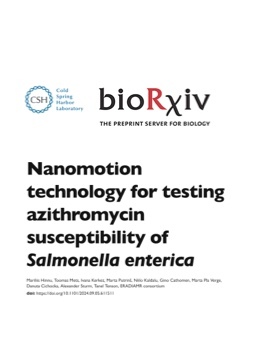
bioRxiv
Nanomotion technology for testing azithromycin susceptibility of Salmonella enterica
Abstract
Azithromycin is used to treat invasive salmonellosis, despite conflicting effective concentrations in vitro and in vivo. Resistance of Salmonella enterica to azithromycin is increasing. We demonstrate that nanomotion technology can be used for rapid phenotypic testing of Salmonella’s susceptibility to azithromycin. Nanomotion changes under various culture conditions correlated with susceptibility measured by MIC determination, CFU counting, and fluorescent reporter-based estimates of intrabacterial azithromycin accumulation.
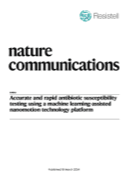
Nature Communications
Accurate and rapid antibiotic susceptibility testing using a machine learning-assisted nanomotion technology platform
Abstract
Antimicrobial resistance (AMR) is a major public health threat, reducing treatment options for infected patients. AMR is promoted by a lack of access to rapid antibiotic susceptibility tests (ASTs). Accelerated ASTs can identify effective antibiotics for treatment in a timely and informed manner. We describe a rapid growth-independent phenotypic AST that uses a nanomotion technology platform to measure bacterial vibrations. Machine learning techniques are applied to analyze a large dataset encompassing 2762 individual nanomotion recordings from 1180 spiked positive blood culture samples covering 364 Escherichia coli and Klebsiella pneumoniae isolates exposed to cephalosporins and fluoroquinolones. The training performances of the different classification models achieve between 90.5 and 100% accuracy. Independent testing of the AST on 223 strains, including in clinical setting, correctly predict susceptibility and resistance with accuracies between 89.5% and 98.9%. The study shows the potential of this nanomotion platform for future bacterial phenotype delineation.
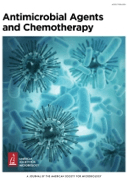
Antimicrobial Agents and Chemotherapy, 63, 3, 2019.
A rapid unraveling of the activity and antibiotic susceptibility of Mycobacteria.
Abstract
The development of antibiotic-resistant bacteria is a worldwide health-related emergency that calls for new tools to study the bacterial metabolism and to obtain fast diagnoses. Indeed, the conventional analysis time scale is too long and affects our ability to fight infections. Slowly growing bacteria represent a bigger challenge, since their analysis may require up to months. Among these bacteria, Mycobacterium tuberculosis, the causative agent of tuberculosis, has caused more than 10 million new cases and 1.7 million deaths in 2016 only. We employed a particularly powerful nanomechanical oscillator, the nanomotion sensor, to characterize rapidly and in real time tuberculous and nontuberculous bacterial species, Mycobacterium bovis bacillus Calmette-Guérin and Mycobacterium abscessus, respectively, exposed to different antibiotics. Here, we show how high-speed and high-sensitivity detectors, the nanomotion sensors, can provide a rapid and reliable analysis of different mycobacterial species, obtaining qualitative and quantitative information on their responses to different drugs. This is the first application of the technique to tackle the urgent medical issue of mycobacterial infections, evaluating the dynamic response of bacteria to different antimicrobial families and the role of the replication rate in the resulting nanomotion pattern. In addition to a fast analysis, which could massively benefit patients and the overall health care system, we investigated the real-time responses of the bacteria to extract unique information on the bacterial mechanisms triggered in response to antibacterial pressure, with consequences both at the clinical level and at the microbiological level.

Small 14, 1702671, 2018.
Nanomotion detection method for testing antibiotic resistance and susceptibility of slow-growing bacteria.
Abstract
Infectious diseases are caused by pathogenic microorganisms and are often severe. Time to fully characterize an infectious agent after sampling and to find the right antibiotic and dose are important factors in the overall success of a patient’s treatment. Previous results suggest that a nanomotion detection method could be a convenient tool for reducing antibiotic sensitivity characterization time to several hours. Here, the application of the method for slow-growing bacteria is demonstrated, taking Bordetella pertussis strains as a model. A low-cost nanomotion device is able to characterize B. pertussis sensitivity against specific antibiotics within several hours, instead of days, as it is still the case with conventional growth-based techniques. It can discriminate between resistant and susceptible B. pertussis strains, based on the changes of the sensor’s signal before and after the antibiotic addition. Furthermore, minimum inhibitory and bactericidal concentrations of clinically applied antibiotics are compared using both techniques and the suggested similarity is discussed.

Clinical Microbiology and Infection, 23, 400-405, 2017.
Nanomechanical sensor applied to blood culture pellets: a fast approach to determine the antibiotic susceptibility against agents of bloodstream infections.
Abstract
The management of bloodstream infection, a life-threatening disease, largely relies on early detection of infecting microorganisms and accurate determination of their antibiotic susceptibility to reduce both mortality and morbidity. Recently we developed a new technique based on atomic force microscopy capable of detecting movements of biologic samples at the nanoscale. Such sensor is able to monitor the response of bacteria to antibiotic’s pressure, allowing a fast and versatile susceptibility test. Furthermore, rapid preparation of a bacterial pellet from a positive blood culture can improve downstream characterization of the recovered pathogen as a result of the increased bacterial concentration obtained.

PNAS, 112, 378-381, 2015.
Detecting nanoscale vibrations as signature of life.
Abstract
The existence of life in extreme conditions, in particular in extraterrestrial environments, is certainly one of the most intriguing scientific questions of our time. In this report, we demonstrate the use of an innovative nanoscale motion sensor in life-searching experiments in Earth-bound and interplanetary missions. This technique exploits the sensitivity of nanomechanical oscillators to transduce the small fluctuations that characterize living systems. The intensity of such movements is an indication of the viability of living specimens and conveys information related to their metabolic activity. Here, we show that the nanomotion detector can assess the viability of a vast range of biological specimens and that it could be the perfect complement to conventional chemical life-detection assays. Indeed, by combining chemical and dynamical measurements, we could achieve an unprecedented depth in the characterization of life in extreme and extraterrestrial environments.
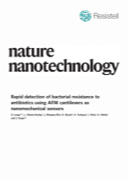
Nature Nanotechnology 8, 522–526, 2013.
Rapid detection of bacterial resistance to antibiotics using AFM cantilevers as nanomechanical sensors.
Abstract
The widespread misuse of drugs has increased the number of multiresistant bacteria1, and this means that tools that can rapidly detect and characterize bacterial response to antibiotics are much needed in the management of infections. Various techniques, such as the resazurin-reduction assays2, the mycobacterial growth indicator tube3 or polymerase chain reaction-based methods4, have been used to investigate bacterial metabolism and its response to drugs. However, many are relatively expensive or unable to distinguish between living and dead bacteria. Here we show that the fluctuations of highly sensitive atomic force microscope cantilevers can be used to detect low concentrations of bacteria, characterize their metabolism and quantitatively screen (within minutes) their response to antibiotics. We applied this methodology to Escherichia coli and Staphylococcus aureus, showing that live bacteria produced larger cantilever fluctuations than bacteria exposed to antibiotics. Our preliminary experiments suggest that the fluctuation is associated with bacterial metabolism.
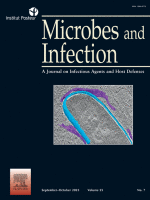
Microbes and Infection, Volume 25, Issue 7, September–October 2023, 105151
Nanomotion technology in combination with machine learning: a new approach for a rapid antibiotic susceptibility test for Mycobacterium tuberculosis
Abstract
Nanomotion technology is a growth-independent approach that can be used to detect and record the vibrations of bacteria attached to cantilevers. We have developed a nanomotion-based antibiotic susceptibility test (AST) protocol for Mycobacterium tuberculosis (MTB). The protocol was used to predict strain phenotype towards isoniazid (INH) and rifampicin (RIF) using a leave-one-out cross-validation (LOOCV) and machine learning techniques. This MTB-nanomotion protocol takes 21 h, including cell suspension preparation, optimized bacterial attachment to functionalized cantilever, and nanomotion recording before and after antibiotic exposure. We applied this protocol to MTB isolates (n = 40) and were able to discriminate between susceptible and resistant strains for INH and RIF with a maximum sensitivity of 97.4% and 100%, respectively, and a maximum specificity of 100% for both antibiotics when considering each nanomotion recording to be a distinct experiment. Grouping recordings as triplicates based on source isolate improved sensitivity and specificity to 100% for both antibiotics. Nanomotion technology can potentially reduce time-to-result significantly compared to the days and weeks currently needed for current phenotypic ASTs for MTB. It can further be extended to other anti-TB drugs to help guide more effective TB treatment.

BMJ Open
Investigating nanomotion-based technology (Resistell AST) for rapid antibiotic susceptibility testing among adult patients admitted to a tertiary-care hospital with Gram-negative bacteraemia: protocol for a prospective, observational, cross-sectional, single-arm study
Abstract
Introduction
Effective treatment of bloodstream infections (BSIs) is relying on rapid identification of the causing pathogen and its antibiotic susceptibility. Still, most commercially available antibiotic susceptibility testing (AST) methods are based on monitoring bacterial growth, thus impacting the time to results. The Resistell AST is based on a new technology measuring the nanomotion caused by physiologically active bacterial cells and detecting the changes in nanomotion caused by the exposure to a drug.
Methods and analysis
This is a single-centre, prospective, cross-sectional, single-arm diagnostic accuracy study to determine the agreement of the Resistell AST on Gram-negative bacteria isolated from blood cultures among patients admitted to a tertiary-care hospital with the reference method. Up to 300 patients will be recruited. Starting with a pilot phase, enrolling 10%–20% of the subjects and limited to Escherichia coli BSI tested for ceftriaxone susceptibility, the main phase will follow, extending the study to Klebsiella pneumoniae and ciprofloxacin.
Ethics and dissemination
This study has received ethical approval from the Swiss Ethics Committees (swissethics, project 2020-01622). All the case report forms and clinical samples will be assigned a study code by the local investigators and stored anonymously at the reference centre (Lausanne University Hospital). The results will be broadly distributed through conference presentations and peer-reviewed publications.

